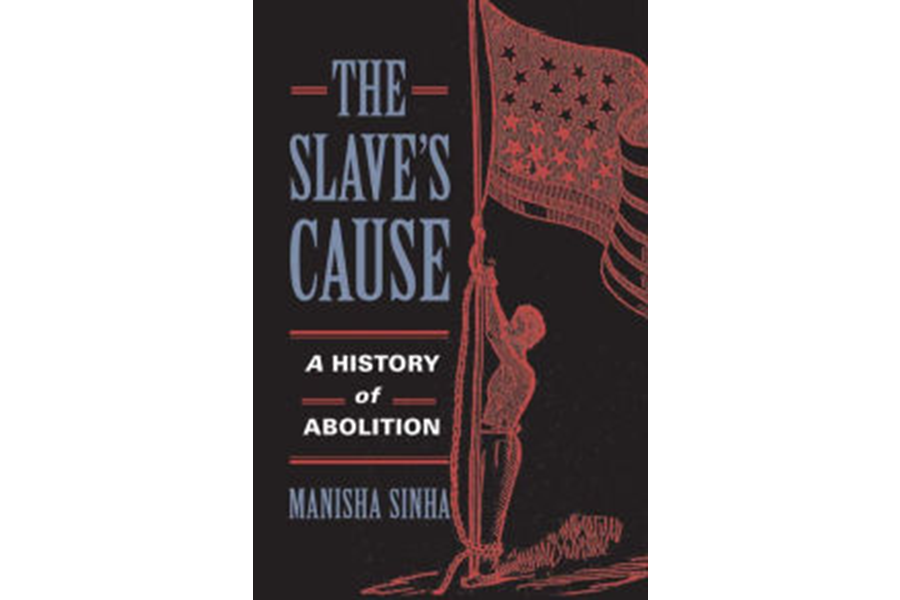'The Slave's Cause' is a thorough and overdue account of the abolition movement in the US
Loading...
“My crime is that I will not go with the multitude to do evil,” declared champion Massachusetts abolitionist William Lloyd Garrison in a famous 1854 speech. “My singularity is, that when I say Freedom is of God, and Slavery is of the devil, I mean just what I say.”
Garrison helped found the fire-breathing abolitionist newspaper "The Liberator" in 1831 and the American Anti-Slavery Society in 1835. He was a tireless and fearless writer and speaker against the entrenched slave-powers of the United States, hammering away at his cause even in the face of physical threats from angry mobs. “I will not be moved,” he typically insisted. “Not a solitary slaveholder will I allow to enjoy repose on any other condition than instantly ceasing to be one.”
It was a valiant, heroic stance, and when he took the time to craft his prose, Garrison could often be its most quotable 19th-century advocate. But as Manisha Sinha's comprehensive and narrative-resetting new book The Slave's Cause: A History of Abolition extensively demonstrates, Garrison's “singularity” was far from singular. In truth he was the inheritor not just of a long Old World tradition attacking slavery (the culmination of that tradition being Britain's Slave Trade Act of 1807, which ended the African slave trade everywhere in the empire) but also of the domestic efforts of dozens of brave pathfinders.
Sinha tells the stories of those pathfinders. “Forgotten antislavery voices and actions of Quaker and African pioneers,” Sinha writes, “slave rebels and runaways, radical, dissenting Christianity, English antislavery lawyers and judges, and early black writers all played a party in laying the foundation of revolutionary abolitionism.”
There's Phillis Wheatley, a young slave in Boston whose writings are “the earliest literary expression of an African American consciousness,” Sinha writes; “Wheatley secured her manumission on the basis of her literary talents, which became an argument for the emancipation of the entire race.” And there's African minister Philip Quaque, who wrote, “I behold with Sorrowful sighings my poor abject Countrymen over whom You, without the Bowels of Christian Love and Pity, hold in cruel Bondage.”
There are now largely forgotten leaders like African abolitionist Olaudah Equiano; Absalom Jones, a manumitted slave; and Episcopal priest, Jeremy Belknap, a Boston pastor and outspoken abolitionist; African minister and itinerant abolitionist lecturer Charles Lenox Redmond; Anthony Benezet, an American abolitionist of Huguenot descent; fugitive slave abolitionist Henry Bibb; James Pennington, Congregationalist minister and the first black student admitted to Yale University; anti-slavery judge Samuel Sewall (now remembered solely for his role in the Salem Witch Trials); and Sarah and Angelina Grimke, South Carolina Quakers who were electrifying on the abolitionist lecture circuit in the 1830s.
There's Connecticut-born Maria Stewart, challenging “every man of color throughout the United States, who possesses the spirt and principles of a man,” to sign a petition to Congress abolishing slavery in the District of Columbia. As Sinha reminds her readers, “Well before the Grimke sisters, Stewart contended that neither sex nor race marked a person but the 'principle formed the soul.'”
Sinha is entirely right to ground the movement of militant abolitionism of so many outspoken advocates, and she's also uncomfortably right in implying that to do otherwise is an inexcusable act of cultural appropriation – the grim irony of writing about the movement to free slaves and giving all the credit to white people. In the decades leading up to the American Civil War and the abolition of slavery by the Thirteenth Amendment in 1865, the whole Western world watched the efforts of abolitionists in the United States. Irish nationalist Daniel O'Connell gave speeches in support of the cause; Karl Marx considered the anti-slavery movement “the most significant thing happening in the world today.” It's simple and long-overdue justice for a new book to place the history of that movement back in the hands of the men and women who risked their freedom and their lives long before William Lloyd Garrison took up the cause.
And by showing the broader, generational nature of that cause, Sinha is able to make a much richer and more thought-provoking assessment of its echoes throughout the era of Reconstruction, when, as she puts it, “the opponents of the abolitionists, of their moral urgency and devotion to black rights, plunged the nation into yet another long racial nightmare.” By easy, logical steps, she's able to extend her narrative to the post-Reconstruction era, the Civil Rights era, and right into our present day with its entrenched racial tensions.
“Nothing is so unpopular as impartial liberty,” Garrison often said, usually to audiences not quite prepared to hear it. In "The Slave's Cause" readers have their fullest and most readable account yet of all his precursors and allies in the long struggle to bring about that impartial liberty in the teeth of opposition from very wealthy interests who believed they had God on their side. Sinha's big book deserves to become the new standard account of all those daring strivers.








